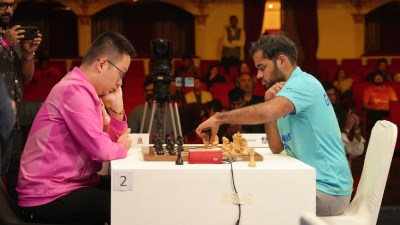Decoding the controversy over Panjab University’s Senate and Syndicate
How the two historic elected bodies evolved, and what triggered the current standoff
 For now, the Senate and Syndicate continue under the existing framework of the Panjab University Act, 1947.
For now, the Senate and Syndicate continue under the existing framework of the Panjab University Act, 1947.The Centre’s October 28 notification that restructured Panjab University’s Senate and Syndicate is facing severe criticism and opposition from students and various political parties. Students say the move “undermines” the historical rights of Punjab over the university and organised protests in the campus demanding its withdrawal. The Indian Express decodes the entire controversy.
When did the Senate and Syndicate come into existence at Panjab University?
Panjab University (PU) traces its origins to Government College, Lahore, set up on January 1, 1864, and renamed University College in 1869. The Senate formed part of its democratic structure, explains Prof Chaman Lal, former Senator, PU. The university was formally established in Lahore in 1882 as the fourth university of British India.
Its calendar outlined a Senate (as governing body) and a Syndicate (as executive body), both democratically constituted with elected representation. In 1904, a common representative calendar was created for the first five universities, Calcutta, Bombay, Madras, Lahore, and Allahabad. After Partition, East Panjab University was set up on October 1, 1947, retaining this system. In 1966, the university became an inter-state institution, continuing with largely the same elected Senate and Syndicate, chaired by the Vice-Chancellor.
What is the role of the Syndicate and the Senate?
The Syndicate implements policy decisions of the Senate and handles day-to-day administrative matters, subject to Senate approval. The Senate makes policy decisions, elects the Syndicate, the Finance Committee, faculty committees and their deans, and discusses matters concerning the university and its constituents.
When did the Centre dissolve these two bodies? What changed?
On October 28, the Centre amended the Panjab University Act, 1947, restructuring the Senate and Syndicate. The order proposed reducing the Senate to 31 members, abolishing elections to the Syndicate, and removing the graduate constituency, effectively replacing the long-standing system of democratic representation with a largely nominated structure. Lal says this vested expanded powers in the Chancellor and Vice-Chancellor.
How has Punjab reacted?
The move triggered strong political and public backlash in Punjab, with faculty, students, alumni and parties across the spectrum opposing it as an erosion of the university’s autonomous and federal character. On November 5, amid mounting pressure and Chief Minister Bhagwant Mann’s announcement that the state would challenge the decision in the Punjab and Haryana High Court, the Centre first withdrew the notification and then issued a fresh one placing it “on hold.”
The first notification issued by the Union Ministry of Education on Wednesday stated, “In exercise of the powers conferred by sub-section (1), read with sub-sections (2) and (3) of section 72 of the Punjab Reorganisation Act, 1966, the Central Government hereby rescinds the notification… dated October 28, 2025.”
A few minutes later, a revised order stated that “the Punjab University Act, 1947 (East Punjab Act 7 of 1947) shall have effect from the date, as appointed by the Central Government, subject to the modifications.”
For now, the Senate and Syndicate continue under the existing framework of the Panjab University Act, 1947.







